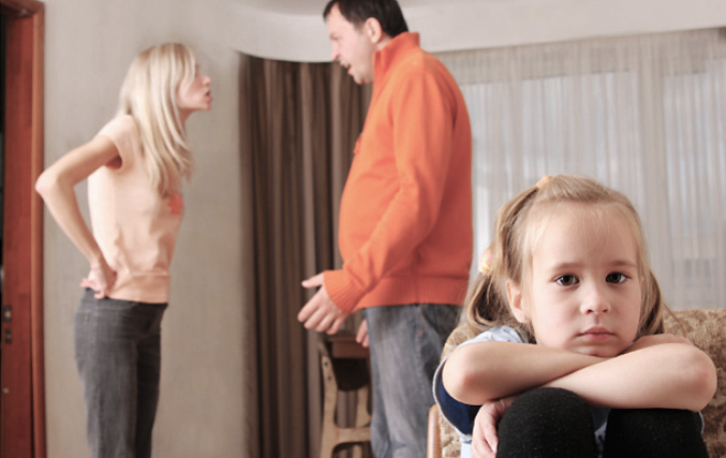
Child Trends
Research into negative childhood experiences — such as divorce, mental illness and even poverty — also shows the areas of the country where adverse experiences are greater. A report from Child Trends measures the prevalence of 8 negative experiences and finds them highest in Oklahoma but lowest in Connecticut and New Jersey.
Adverse events in childhood — ranging from witnessing violence to having a mentally ill parent — can have long-lasting effect on kids, according to research that looks at a number of such experiences during childhood.
Recent research on the subject from Child Trends, says economic hardship is the most common adverse experience among children in the United States. Divorce is the second, the data showed. In most states, the third most prevalent experience was living with a parent who had a drug or alcohol problem.
The authors looked at data from a nationally representative sample, the 2011/12 National Survey of Children’s Health.
Prior research had surveyed adults about their childhood experiences, said David Murphey, CQ senior research scientist at Child Trends. The current survey asked parents to recount the experiences of their children. It was also the first nationally representative survey.
Researchers looked at eight adverse experiences and how widespread they are for children:
- Divorce
- Death of parent or guardian
- Parent in jail
- Mentally ill or suicidal person in household
- Household member with drug or alcohol problem
- Witnessing adult in household behaving violently
- Victim of violence in neighborhood or witnessing it
- Economic hardship
Forty-six percent of children in the United States have had at least one of the experiences on the list, according to the report. In sixteen states, more than half of children have experienced at least one.
In the District of Columbia, being a witness to violence or a victim of violence was the second most common adverse experience, according to the data.
Past research has shown that having multiple such experiences significantly raises the risks for kids.
“We know [adverse childhood experiences] can contribute to trauma,” Murphey said. “Multiple adverse experiences can lead to toxic levels of stress.”
Some studies indicate that four adverse experiences is the point at which kids have a particularly high risk of negative physical and mental health outcomes, according to the brief.
It’s important to be aware of how these experiences can affect young children, Murphey said. It helps adults who work with children become more trauma-informed and better understand the variety of things that underlie behavior.
Three states, Oklahoma, Montana, and West Virginia, have the highest prevalence of kids — about one in six — having four or more adverse experiences.

























